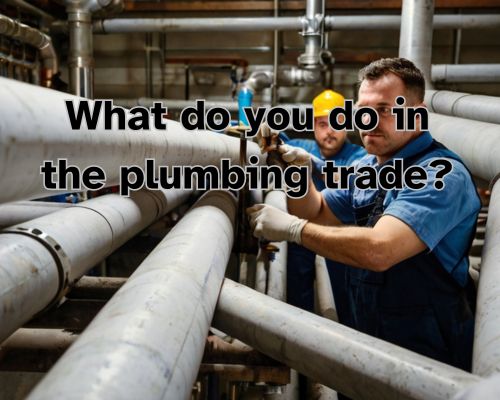If you’re working on a gas installation project, you might be wondering whether copper fittings can be used for gas.
Copper is a popular material for plumbing fittings due to its durability and resistance to corrosion. However, when it comes to gas installations, there are a few important factors to consider.

First and foremost, safety is the top priority when working with gas. Building codes and legal requirements exist to ensure that gas installations are safe for use.
“It’s important to check whether copper fittings are allowed for gas installations in your area, as some regions may have specific regulations regarding the use of copper fittings for gas.” said Dean Owens of Plumber Warragul.
Additionally, you must use the correct type of copper fittings that are approved for use with gas. Using the wrong type of fitting can lead to leaks or other safety hazards.
Copper Fittings in Gas Systems
Copper fittings are a popular choice for gas distribution systems due to their excellent performance and cost-effectiveness.
Copper tubing is widely used for both natural gas and propane gas piping systems in residential and commercial buildings.
In this section, we will discuss the compatibility and usage, installation and connection types, and regulations and standards related to copper fittings in gas systems.
Compatibility and Usage
Copper fittings are compatible with both natural gas and propane gas systems.
However, you must ensure that the copper tubing used in the gas system is of the correct type and grade, as specified by the relevant Australian Standard.
For example, AS/NZS5601 permits copper tube to AS1432 Type A and B to be used for gas installations.
Copper fittings are commonly used in gas systems because of their flexibility, which makes them easy to install and connect.
Copper pipe can be bent and shaped without the need for special tools, making it ideal for tight spaces and hard-to-reach areas.
Installation and Connection Types
Copper fittings can be connected to gas appliances using various connection types, including flare fittings, compression fittings, and special tools.
For copper natural gas systems joined with flared tube connections, flared brass fittings of a single 45 o flare type are used. Connections to steel pipe are made with an NPS threaded-to-flared copper adapter.
Compression fittings are not permitted in gas piping systems unless allowed by the authority having jurisdiction.
Special tools, such as flare nut wrenches and tube cutters, are required to install and connect copper fittings properly.
Regulations and Standards
Dean Owens of Plumber Warragul highlights that “Copper fittings must comply with all relevant building codes and standards, including the National Fuel Gas Code (NFPA 54/ANSI Z223.1) and AS/NZS 3500 for plumbing and drainage systems.”
In states like Minnesota, Alabama, Georgia, Florida, etc., copper is the dominant choice for flexible fuel gas piping systems in homes and multi-family units.
Safety Considerations and Alternatives
Risks and Preventative Measures
When using copper fittings for gas, there are some risks and preventative measures that you should be aware of.
Copper fittings are generally safe for use with natural gas and propane, but they can corrode over time, which can lead to gas leaks.
To prevent this, you must ensure that the fittings are installed correctly and are inspected regularly for signs of corrosion or leaks.
It is also important to use the correct type of copper tube for gas applications.
Copper tube that is designated as Type K or L is suitable for use with gas, while Type M is not.
Additionally, make sure to use the correct size of copper tube for the gas system to ensure that it can handle the required flow rate.
Another risk to consider is the potential for fire.
Copper fittings should not be used in areas where they may come into contact with flammable materials, such as clothes dryers or other appliances.
It is also important to ensure that any nearby flammable materials are kept at a safe distance from the gas system.
Alternative Materials
If you are concerned about the risks associated with copper fittings, there are alternative materials that you can use.
One option is stainless steel, which is highly resistant to corrosion and can be used with both natural gas and propane.
Corrugated stainless steel tubing (CSST) is a popular choice for gas systems, as it is flexible and easy to install.
Steel pipe is another alternative to copper fittings, but it is more prone to corrosion than stainless steel.
Galvanized pipe is a type of steel pipe that has been coated with zinc to help prevent corrosion, but it is not suitable for use with natural gas or propane.
Finally, PVC is a non-metallic material that can be used for gas systems, but it is important to ensure that it is rated for use with gas and that it is installed correctly.
PVC is not as durable as metal materials and may need to be replaced more frequently.
